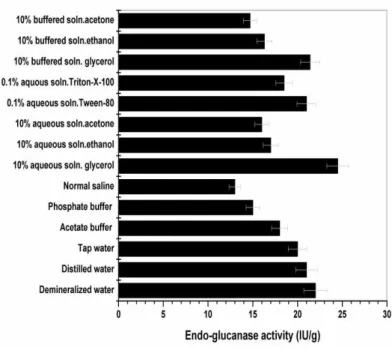RECOVERY OF ASPERGILLUS ENDO-GLUCANASE PRODUCED ON SOLID SUBSTRATE: A DOE BASED APPROACH
Texto
Imagem


Documentos relacionados
The process was carried out using a factorial design in the Box-Behnken optimization model, using a response surface methodology (RSM) in which three factors (time, temperature
To identify any association between histological changes and the duration of hypoxia, the piglets were further divided into five groups based on recovery time: Group A: fast recovery
In this study, by Response Surface Methodology (RSM), the effects of different concentrations of inulin, acacia gum and sorbitol in the characteristics of hardness, color and
When enzymes are produced by SSF, the first step for the recovery or purification process is the leaching or liquid/solid extraction (Rodríguez-Fernandez, 2004). 2007) and none
By applying the conventional “one-variable-at-a-time” approach and the response surface methodology, the effect of four fermentation parameters (type of carbon source, initial
In the current study, response surface methodology (RSM) was used to assess the effects of extraction time and temperature on the content of bioactive compounds and
The effects of substrate concentration (sucrose and inulin), pH and temperature on inulinase activity were verified using four factorial design and surface response analysis..
Figure 3: Pareto chart for the effects of the variables solid to liquid ratio (m:v), stirring rate, and temperature on the recovery of endoglucanase, using 0.02 mol/L acetate buffer